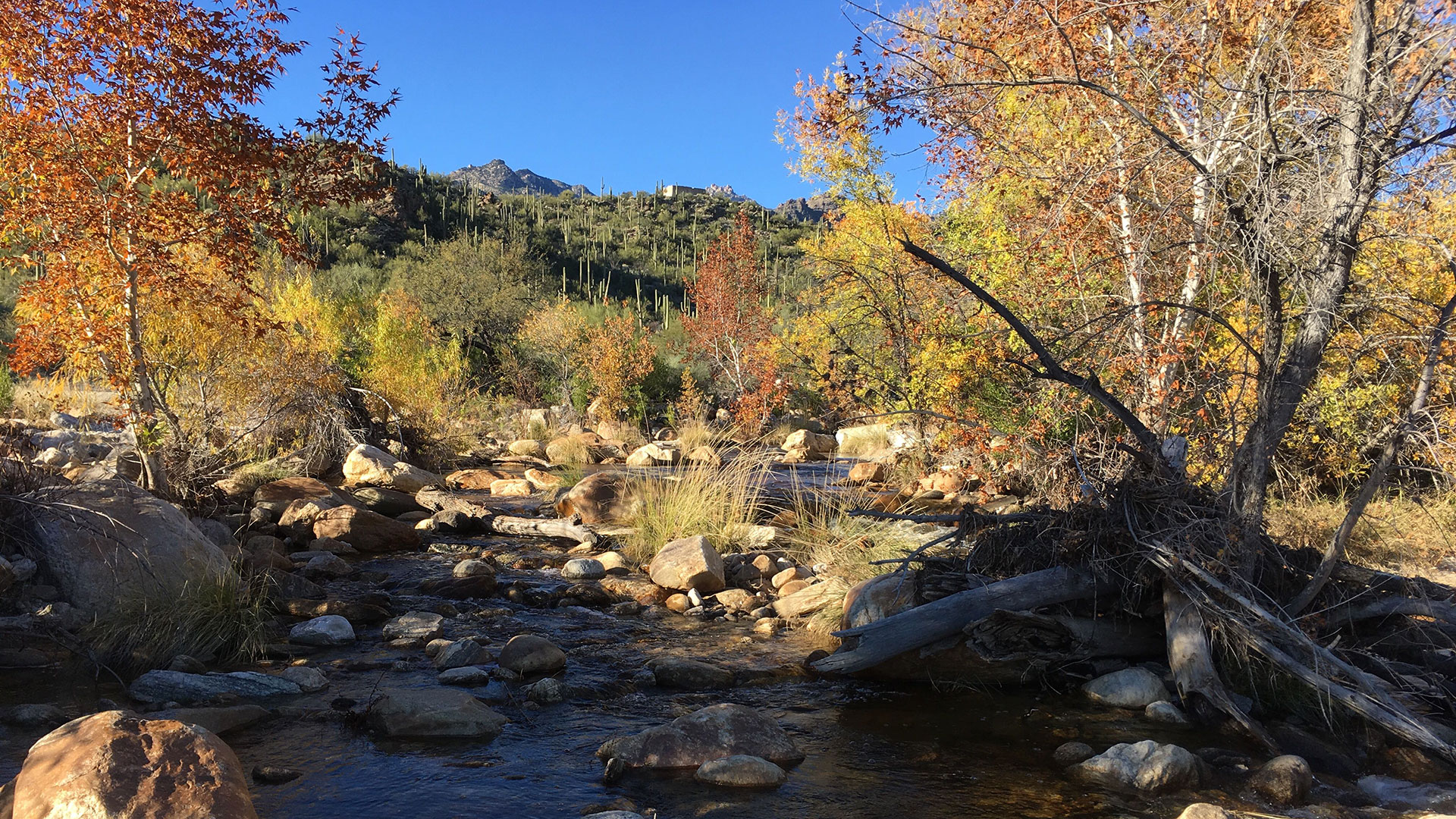 Looking upstream Sabino Creek on one of the bridges at the popular recreation site in Tucson in early winter.
Looking upstream Sabino Creek on one of the bridges at the popular recreation site in Tucson in early winter.
Arizona does not currently have a comprehensive program to protect its surface water quality. The state is now faced with the task of creating one following a change to federal law.
The Trump administration unveiled its final rule in January redefining which waterways are regulated under the Clean Water Act, known as "Waters of the U.S." Under this rule change, the vast majority of Arizona's creeks and streams will not be protected.
At a public meeting in Tucson in late February, facilitator Theresa Gunn invited attendees to help the state fill in the gaps in regulating surface water quality.
"This is a blank sheet of paper," Gunn said. "This is a new program. So we're doing a lot of work collaborative with you up front to make sure we have the right goals and guiding principles for the program."
The 30 or so people in the room represented many interests: local government agencies, mining companies, utilities, Fort Huachuca, the Forest Service and environmental associations.
When the Trump administration published its draft rule redefining Waters of the U.S. last year, The Arizona Department of Environmental Quality estimated around 90% of waterways in the state would lose protections under the Clean Water Act. But now that the final rule has been released, ADEQ's Krista Osterberg explained that number is less clear. That's because many of those determinations have to be made essentially on a case-by-case basis.
The Clean Water Act still applies to what are considered "navigable waters" and their tributaries, but even some of those waters are unclear at this point. There is no comprehensive map of which waterways will be in or out under this new rule. Arizona is now collecting data to define them.
Osterberg reminded those at the meeting that this is not the first time an administration has sought to redefine these waters.
"This is not your first Clean Water Act rodeo, you're aware there's been a lot of dissension, discussion, debate, litigation over what is or is not a water of the United States," she said.
Once those waterways are defined, ADEQ will also have to figure out how to protect those that no longer receive federal protections--like isolated urban lakes, canals and intermittent streams. Osterberg said state leadership is supportive of this rule change and the chance to create state-specific guidelines.
"We're not necessarily talking about what's 'navigable' or not when we're talking about a state program," she said. "This is a whole new approach, whole new ball of wax. There's a lot of opportunity on the table to do things differently if there's a better way to do them."
But many in the environmental community oppose the change and worry what the loss of protections will mean for state waterways. ADEQ estimates it will take three years to put a new set of statewide rules in place. So what happens in the meantime?
Osterberg said ADEQ already has tools to regulate groundwater quality and pollution, as well as the ability to set and enforce minimum standards for water quality. That includes permits for construction and pesticides.
"There's also local ordinances and authorities that exist," she said. "It's definitely a patchwork. It's not a complete void but it is something that we want to work as quickly as we can to try to cover."
Those at the public meeting were guided through discussions about the goals and guiding principles of this new regulation program. They raised several questions, like what will happen to so-called "Outstanding Arizona Waters," a list of 22 streams with high water quality and ecological or recreational significance that can receive additional protections from pollution.
Several, like Carolyn Shafer of Patagonia, said they came to learn more about what the state is doing.
"I'm here because it is important to participate in the conversation about protecting our waters and I'm grateful that a state agency has included other than industry interests. It's important to be here and speak out," Shafer said.
Others said they want to raise awareness now about possible gaps in the state's future regulations. ADEQ will continue to have public meetings and plans to create stakeholder workgroups to help develop the program in the coming months.
The Trump administration's rule will become law 60 days after it's published in the federal register. That still hasn't happened but is expected any day.

By submitting your comments, you hereby give AZPM the right to post your comments and potentially use them in any other form of media operated by this institution.